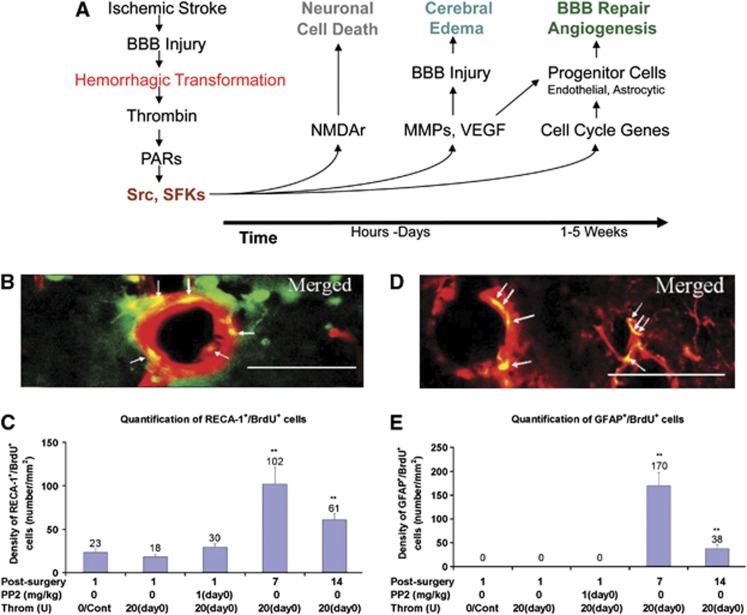Figure 5.
(A) Hemorrhagic transformation (HT) activates src and src family kinases (SFKs) via thrombin induction of protease-activated receptors (PARs). Within the first hours after stroke SFKs activate N-methyl D-aspartate receptors (NMDAr) and induce neuronal cell death. Within the first few days of hemorrhage, SFKs activate matrix metalloproteinases (MMPs), vascular endothelial growth factor (VEGF), and other molecules involved in blood–brain barrier (BBB) injury and cerebral edema. Beginning around 1 week after hemorrhage, SFKs activate cell-cycle genes in progenitor cells to form new brain endothelial cells and astrocytes that are involved in BBB repair and angiogenesis. (B) HT produces thrombin that induces the birth of new cerebral endothelial cells at day 7 and day 14 in rat hippocampus (green=BrdU (bromodeoxyuridine, a marker of cell proliferation); red=RECA-1 (rat endothelial cell antigen-1, endothelial cell marker); yellow=merged). (C) There is an increase in new cerebral endothelial cells (BrdU+ RECA-1+) in the hippocampus (LMol layer) on days 7 and 14 after thrombin injection. **P<0.01 (Cont=control; PP2=non-specific src family kinase inhibitor; Throm=thrombin; (D) HT produces thrombin that induces the birth of new perivascular astrocytes at day 7 and day 14 in rat hippocampus (green=BrdU; red=GFAP (green fluorescence protein, astrocyte marker); yellow=merged). (E) There is an increase in new perivascular astrocytes (BrdU+ GFAP+) in the hippocampus (LMol layer) on days 7 and 14 after thrombin injection. **P<0.01 (figures from Liu et al).121

